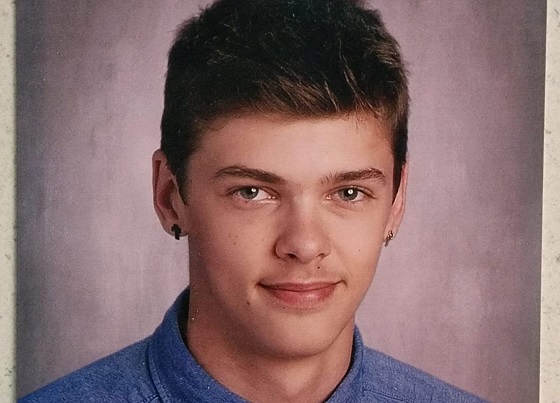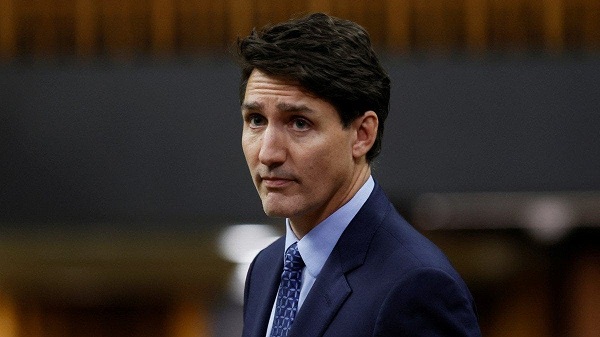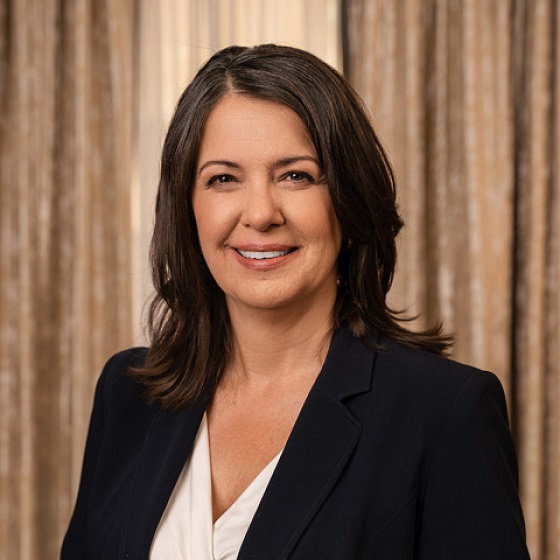Crime
Part of haul from 2019 German museum jewelry heist recovered

BERLIN (AP) — German authorities said Saturday that they have recovered a significant part of the 18th-century treasures stolen from Dresden’s Green Vault museum in a spectacular break-inmore than three years ago.
Prosecutors and police said in a statement that they secured 31 items in Berlin overnight, including “several pieces that appear to be complete.” They were taken to Dresden, more than 160 kilometers (100 miles) away, where police and then officials from the authority that oversees the city’s art collections plan to check their authenticity and examine whether they are intact.
Some prominent items are still missing, authorities said.
Saturday’s statement gave no details of where exactly the items were found and in what circumstances.
But they said that the find was preceded by exploratory talks between prosecutors and the defense in an ongoing trial over the theft on a possible agreement that would include the return of stolen items. They added that they can give no further information ahead of the next trial session scheduled for Tuesday.
Six men went on trial in Dresden in January, accused of gang robbery and arson over the Nov. 25, 2019, robbery. The German nationals were accused of stealing jewelry with a total insured value of at least 113.8 million euros ($121 million).
Officials said at the time that the items taken included a large diamond brooch and a diamond epaulette. The treasury of Augustus the Strong of Saxony was established in 1723 and contains around 4,000 objects of gold, precious stones and other materials on display in Dresden’s Royal Palace.
Prosecutors have said that the suspects laid a fire just before the break-in to cut the power supply for street lights outside the museum, and also set fire to a car in a nearby garage before fleeing to Berlin.
Saxony’s regional culture minister, Barbara Klepsch, said officials are waiting to see experts’ assessment and discover what condition the recovered pieces are in.
“I remain hopeful that the wound opened in the historic Green Vault in the 2019 robbery will soon be closed,” Klepsch said in a statement. “This shows that, even three years after this painful break-in, it is worth not giving up hope and pursuing all tracks that arise.”
Addictions
Should fentanyl dealers face manslaughter charges for fatal overdoses?

Tyler Ginn prior to his death from a fentanyl overdose in 2021. [Photo credit: Gayle Fowlie]
By Alexandra Keeler
Police are charging more drug dealers with manslaughter in fentanyl overdose deaths. But the shift is not satisfying everyone
Four years ago, Tyler Ginn died of a fentanyl overdose at the age of 18. Tyler’s father found his son unresponsive in the bedroom of their Brooklin, Ont., home.
For Tyler’s mother, Gayle Fowlie, the pain of his loss remains raw.
“He was my kid that rode his bike to the store to buy me a chocolate bar on my birthday, you know?” she told Canadian Affairs in an interview.
Police charged Jacob Norn, the drug dealer who sold Tyler his final, fatal dose, with manslaughter. More than three years after Tyler’s death, Norn was convicted and sentenced to six years in prison.
“I don’t think you can grasp how difficult going through a trial is,” Fowlie said. “On TV, it’s a less than an hour process. But the pain of it, and going over every detail and then going over every detail again … it provides details you wish you didn’t know.”
But Fowlie is glad Norn was convicted. If anything, she would have liked him to serve a longer sentence. Lawyers have told her Norn is likely to serve only two to four years of his sentence in prison.
“My son’s never coming back [and] his whole family has a life sentence of missing him the rest of our lives,” she said. “So do I think four years is fair? No.”
Norn’s case reflects a growing trend of drug dealers being charged with manslaughter when their drug sales lead to fatal overdoses.
But this shift has not satisfied everyone. Some would like to see drug dealers face harsher or different penalties.
“If we say that it was 50 per cent Tyler’s fault for buying it and 50 per cent Jacob’s fault for selling it … then I think he should have a half-a-life sentence,” said Fowlie.
Others say the legal system’s focus on prosecuting low-level drug dealers misses the broader issues at play.
“[Police] decided, in the Jacob Norn case, they were going to go one stage back,” said Peter Thorning, who was Norn’s defence lawyer.
“What about the person who gave Jacob that substance? What about the person who supplied the substance to [that person]? There was no investigation into where it came from and who was ultimately responsible for the death of that young man.”
Manslaughter charge
At least 50,000 Canadians have died from drug overdoses since 2016. Last year, an average of 21 individuals died each day, with fentanyl accounting for nearly 80 per cent of those deaths.
Fentanyl, a synthetic opioid, is up to 50 times stronger than heroin and 100 times stronger than morphine. A dose as small as a few grains of salt can be lethal.
Given its potency, police and prosecutors have increasingly turned to manslaughter charges when a dealer’s product results in a fatal overdose.
A recent study in the Canadian Journal of Law and Society found that the number of manslaughter charges laid for drug-related deaths in Canada surged from three cases in 2016 to 135 in 2021.
Individuals can be convicted of manslaughter for committing unlawful, reckless or negligent acts that result in death but where there was no intention to kill. Sentences can range from probation (in rare cases) to life.
Murder charges, by contrast, require an intent to kill or cause fatal harm. Drug dealers typically face manslaughter charges in overdose cases, as their intent is to distribute drugs, not to kill those who purchase them.
Joanne Bortoluss, a spokesperson for the Durham Regional Police, which charged Norn, said that each of their investigations follows the same fundamental process.
“Investigators consider the strength of the evidence, the dealer’s level of involvement, and applicable laws when determining whether to pursue charges like manslaughter,” she said.
The Canadian Journal of Law and Society study also found that prosecutions often target low-level dealers, many of whom are drug users themselves and have personal connections to the deceased.
Norn’s case fits this pattern. He struggled with substance abuse, including addiction to fentanyl, Xanax and Percocet. Tyler and Norn were friends, the judge said in the court ruling, although Fowlie disputes this claim.
“[Those words] are repulsive to me,” she said.
The Crown argued Norn demonstrated “a high degree of moral blameworthiness” by warning Ginn of the fentanyl’s potency while still selling it to him. In a call to Ginn, he warned him “not to do a lot of the stuff” because he “didn’t want to be responsible for anything that happened.”
Fowlie’s outrage over Norn’s lenient sentencing is compounded by the fact that Norn was found trafficking fentanyl again after her son’s death.
“So we’ve killed somebody, and we’re still … trafficking? We’re not worried who else we kill?” Fowlie said.

Trafficking
Some legal sources noted that manslaughter charges do not necessarily lead to harsh sentences or deterrence.
“If you look at how diverse and … lenient some sentences are for manslaughter, I don’t think it really pushes things in the direction that [victims’ families] want,” said Kevin Westell, a Vancouver-based trial lawyer and former chair of the Canadian Bar Association.
Westell noted that the term “manslaughter” is misleading. “Manslaughter is a brutal-sounding title, but it encapsulates a very broad span of criminal offences,” he said.
In Westell’s view, consistently charging dealers with drug trafficking could be more effective for deterring the practice.
“What really matters is how long the sentence is, and you’re better off saying, ‘We know fentanyl is dangerous, so we’re setting the sentence quite high,’ rather than making it harder to prove with a manslaughter charge,” he said.
Trafficking is a distinct charge from manslaughter that involves the distribution, sale or delivery of illicit drugs. The sentencing range for fentanyl trafficking is eight to 15 years, Kwame Bonsu, a media relations representative for the Department of Justice, told Canadian Affairs.
“Courts must impose sentences that are proportionate to the gravity of the offence and the degree of responsibility of the offender,” Bonsu said, referencing a 2021 Supreme Court of Canada decision. Bonsu noted that aggravating factors such as lack of remorse or trafficking large quantities can lead to harsher sentences.
‘Head of the snake’
Some legal experts noted the justice system often fails to target those higher up in the drug supply chain.
“We don’t know how many hands that drug goes through,” said Thorning, the defence lawyer.
“Are the police going to prosecute every single person who provides fentanyl to another person? Jacob [Norn] was himself an addict trafficker — what about the person who supplied the substance to him?”
Thorning also questioned whether government agencies bear some responsibility. “Is some government agency’s failure to investigate how that drug came into the country partly responsible for the young man’s death?”
Westell, who has served as both a Crown prosecutor and criminal defence lawyer, acknowledged the difficulty of targeting higher-level traffickers.
“Cutting off the head of the snake does not align very well with the limitations of the international borders,” he said.
“Yes, there are transnational justice measures, but a lot gets lost, and as soon as you cross an international border of any kind, it becomes incredibly difficult to follow the chain in a linear way.”
Bortoluss, of the Durham police, said even prosecuting what appear to be obvious fentanyl-related deaths — such as Tyler Ginn’s — can be challenging. Witnesses can be reluctant to cooperate, fearing legal consequences. It can also be difficult to identify the source of drugs, as “transactions often involve multiple intermediaries and anonymous online sales.”
Another challenge in deterring fentanyl trafficking is the strong financial incentives of the trade.
“Even if [Norn] serves two to four years for killing somebody, but he could make a hundred thousand off of selling drugs, is it worth it?” Fowlie said.
Thorning agreed that the profit incentive can be incredibly powerful, outweighing the risk of a potential sentence.
“The more risky you make the behaviour, the greater the profit for a person who’s willing to break our laws, and the profit is the thing that generates the conduct,” he said.
A blunt instrument
Legal experts also noted the criminal justice system alone cannot solve the fentanyl crisis.
“Most people who have [lost] a loved one [to drug overdose] want to see a direct consequence to the person that’s responsible,” said Westell. “But I think they would also like to see something on a more macro level that helps eliminate the problem more holistically, and that can’t be [achieved through] crime and punishment alone.”
Thorning agrees.
“These are mental health .. [and] medical issues,” he said. “Criminal law is a blunt instrument [that is] not going to deal with these things effectively.”
Even Fowlie sees the problem as bigger than sentencing. Her son struggled with the stigma associated with therapy and medication, which made it difficult for him to seek help.
“We need to normalize seeing a therapist, like we normalize getting your eyes checked every year,” she said.
“Pot isn’t the gateway drug, trauma is a gateway drug.”
This article was produced through the Breaking Needles Fellowship Program, which provided a grant to Canadian Affairs, a digital media outlet, to fund journalism exploring addiction and crime in Canada. Articles produced through the Fellowship are co-published by Break The Needle and Canadian Affairs.
Subscribe to Break The Needle – or donate to our investigative journalism fund.
Crime
Chinese Narco Suspect Caught in Private Meeting with Trudeau, Investigated by DEA, Linked to Panama, Caribbean, Mexico – Police Sources

 Sam Cooper
Sam Cooper
Shocking new details are emerging about a major Chinese organized crime suspect who met privately with Prime Minister Justin Trudeau, according to a police source who confirmed recent reporting from The Globe and Mail. The individual, Paul King Jin, is allegedly implicated in money laundering operations spanning the Western Hemisphere and has been a target of multiple failed major investigations in British Columbia. These investigations sought to unravel the complex interrelations of underground casinos and real estate investment, fentanyl and methamphetamine trafficking, and financial crimes that allegedly funnel drug proceeds from diaspora community underground banks throughout North America and Latin America, with connections to Chinese and Hong Kong financial institutions.
The failed investigations into Jin have involved both the RCMP and U.S. agencies. These operations stretch from Vancouver to Mexico, Panama, and beyond, multiple sources confirm.
Repeated efforts to reach Jin for comment through his lawyer in the British Columbia Cullen Commission, which stemmed from investigative journalism exposing BC casino money laundering, have not been successful. Recent BC civil forfeiture filings seeking to seize alleged money laundering proceeds from Jin, with cases connecting 14 Vancouver homes to entities in Hong Kong and China, also indicate Jin has not been responsive through a lawyer.
Highlighting longstanding U.S. government concerns over the B.C. investigations and suspects like Jin, Mayor Brad West confirmed in exclusive interviews with The Bureau that U.S. Secretary of State Antony Blinken expressed dismay over Canada’s failure to successfully prosecute Jin and Chinese crime networks, specifically citing the collapse of the E-Pirate investigation. Reportedly Canada’s largest-ever probe into money laundering, E-Pirate fell apart in court after cooperating witnesses were exposed. One of the Chinese Triad narcotics traffickers targeted in E-Pirate surveillance, Richard Yen Fat Chiu, was found stabbed and burned to death near the Venezuelan border on June 20, 2019, according to Colombian news reports.
The Bureau has verified with a source possessing direct knowledge of Canadian policing failures that crucial intelligence regarding Sam Gor—a massive transnational crime syndicate—was provided to the RCMP by U.S. agencies yet failed to result in prosecutions.
One primary source confirmed a new detail reported by The Globe and Mail: Prime Minister Justin Trudeau was entangled in an RCMP surveillance operation that targeted Paul Jin and the Sam Gor networks in Richmond, British Columbia. The Globe reported that early in his tenure, Trudeau met with Jin at a closed-door gathering at the Executive Inn Express Richmond, near Vancouver International Airport. Three sources corroborated the meeting according to The Globe, which took place between late 2015 and early 2017. Also present at the meeting was a Chinese army veteran with close ties to Beijing. The Globe noted that the veteran had attended social events with Chinese diplomats, reinforcing concerns about political and security risks posed by these associations.
The Bureau’s police source, who is independent of The Globe’s sources, confirmed they were aware of the RCMP surveillance operation that placed Trudeau, Jin, and the Chinese army veteran together in a private meeting.
Meanwhile, Jin himself has been surveilled in meetings with Chinese police officers who have traveled to Richmond, according to a separate police source with extensive knowledge of Chinese organized crime and influence operations in Canada. Two sources further stated that Jin continues to operate underground casino networks in Richmond, where law enforcement intelligence believes he has erected a mansion using front owners. Membership at this establishment is reportedly set at $100,000 for high-rollers.
According to a criminal intelligence source, Jin has alleged ties to China’s Ministry of Public Security and the network of clandestine Chinese police stations in British Columbia investigated by the RCMP. Two sources confirmed that Jin has allegedly acquired a new luxury mansion in Richmond, registered under a nominee—an established organized crime tactic.
“Jin uses one of his flunkies as a nominee for it. Common practice,” the source said. They further alleged that one of Jin’s associates tied to the mansion was implicated with Jin in a significant 2009 methamphetamine investigation. “Again, the use of nominees for real estate and businesses. Organized crime 101.”
Jin’s activities extend well beyond Canada, two sources alleged.
“He’s spending a lot of time in Latin America and the Caribbean,” a source said. “Asian organized crime is running amok. Foreign actor interference is getting really established. How it works is the current government welcoming any contributions from the motherland. What does this have to do with Asian organized crime in Canada? There’s a trade connection now from those areas in Latin America and the Caribbean to Canadian Asian organized crime commodity trades, primarily via the Maritimes.”
Jin has also been linked to international criminal networks, with two sources indicating that he and other high-level Canadian Triad associates have been traveling extensively to Panama and other Latin American jurisdictions. These movements align with intelligence connecting Canadian Triads to Mexican cartel operatives, facilitating narcotics trafficking, money laundering, and commodity smuggling into the United States.
Panama, which Trump administration State Secretary Marco Rubio has flagged as a hub of Chinese crime and state influence, has emerged as a focal point for Jin’s operations. “Jin was spending an awful lot more time down in Panama, where we think he is putting a lot of his capital there,” a source familiar with North American law enforcement investigations said. “They have the same kind of problem going on in Panama City as Vancouver, with all of the condo towers, and they’re empty. So people are plowing money into that place too.”
Adding to the concerns, a source disclosed that Jin’s travels to Panama raised red flags within international law enforcement circles. Jin flew from Vancouver to Toronto, then to Mexico City, Colombia, and finally Panama. Upon arrival, Panamanian customs flagged discrepancies in his travel documents, detecting an alternate identity. He was deemed inadmissible and promptly deported along the same route back to Canada.
“They said, ‘No, you’re inadmissible. Something’s wrong here. You’re traveling under this name, but we have you here as another person.’ So Panama punted him and sent him back exactly the same route, and we caught wind of this because of the liaison office down in Bogota,” the source, who could not be identified due to sensitivities in Canada, said. “And they let us know, and locally, the CBSA guys let the Toronto guys know because that’s where he would clear Canada Customs coming back. So they were like, ‘Okay, this is worthy of an interview.’ And they put a flag in the system and everything else.
“To make a long story short, it all fell flat. Nobody interviewed him. He just came right back—came right back to his place here in Vancouver. And so it just shows you the brokenness of our own system, that we can’t even get a key guy like that consistently checked and stopped, and he’s traveling under false papers.”
Jin’s expanding influence in Panama is a significant development aligning with Trump administration concerns, the source said, underscoring broader fears about China’s growing criminal and political footprint in the Western Hemisphere.
The Bureau previously reported that the latest BC civil forfeiture case—the fourth against Jin in three years—suggests he is actively evading British Columbia court procedures. Court filings state that after being banned from British Columbia casinos, Paul King Jin shifted his operations to illegal gaming houses, generating over $32 million in just four months in 2015. These underground casinos became a crucial node in a cash-based network fueling the proliferation of synthetic drugs across North America.
The case intensified in November 2022 when Everwell Knight Limited, a Hong Kong-registered entity holding mortgages on 14 disputed properties linked to Jin, sought to dismiss the government’s forfeiture claim on procedural grounds. Everwell’s legal team invoked the Canadian Charter of Rights—an increasingly common legal strategy in Canadian money laundering cases—arguing that the Director of Civil Forfeiture had failed to meet procedural requirements.
In April 2023, the Director of Civil Forfeiture responded with a default judgment application, contending that Jin’s failure to file a defense effectively conceded key allegations. The case also underscored Jin’s pattern of evasion, with the Director’s counsel noting that an unnamed lawyer initially suggested they might represent Jin but then ceased communication, leaving his legal status unresolved.
Regarding another key Sam Gor associate, E-Pirate target Richard Chiu—the Vancouver-area drug kingpin found burned and stabbed in 2019 near Cúcuta, a city close to the Colombian border with Venezuela—Chiu had previously been convicted in Massachusetts in 2002 for conspiracy to distribute and possess heroin.
According to B.C. Supreme Court documents, Chiu was the subject of multiple Vancouver police drug investigations. In 2017, during one such probe, authorities surveilled an Audi Q7 leased to him. Civil forfeiture filings state that police observed Chiu’s wife, Kimberly Chiu, exiting the vehicle while a “known gang associate” placed a heavy bag into the trunk.
Kimberly Chiu later became the subject of a civil forfeiture case after police seized $317,000 from the Audi—most of it packed in vacuum-sealed bundles inside a duffel bag. However, unlike other suspects, Richard Chiu was never criminally charged in Canada or directly sued by the director of civil forfeiture.
The government’s statement of claim alleged that Kimberly Chiu was “acting as a courier for Asian organized crime,” a claim she denied. In her defense, she argued that Vancouver police had no lawful grounds to detain or search her.
The collapse of E-Pirate and related Canadian law enforcement failures prompted then-B.C. Attorney General David Eby to launch a review, but it led to no legal reforms or policy changes in the province.
-

 2025 Federal Election2 days ago
2025 Federal Election2 days agoPoilievre refuses to bash Trump via trick question, says it’s possible to work with him and be ‘firm’
-

 2025 Federal Election2 days ago
2025 Federal Election2 days agoPoilievre to let working seniors keep more of their money
-

 2025 Federal Election2 days ago
2025 Federal Election2 days agoVoters should remember Canada has other problems beyond Trump’s tariffs
-

 Community2 days ago
Community2 days agoSupport local healthcare while winning amazing prizes!
-

 COVID-192 days ago
COVID-192 days ago17-year-old died after taking COVID shot, but Ontario judge denies his family’s liability claim
-

 Daily Caller2 days ago
Daily Caller2 days agoCover up of a Department of Energy Study Might Be The Biggest Stain On Biden Admin’s Legacy
-

 International2 days ago
International2 days agoVice President Vance, Second Lady to visit Greenland on Friday
-

 Business1 day ago
Business1 day agoWhile “Team Canada” attacks Trump for election points, Premier Danielle Smith advocates for future trade relations







